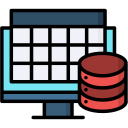
Visualizing Data Relationships
Entity-Relationship Diagrams (ERD) are vital for visualizing how data entities relate within a database. DBeaver’s ERD tool allows users to create and manage these diagrams, enhancing the clarity of database relationships. Visualizing data relationships aids in ensuring proper data structure.

The Power of ER Diagrams
Using DBeaver’s intuitive ER diagram editor, users can easily add, modify, and arrange entities, which simplifies database design. The visual representation supports better communication between stakeholders and helps in troubleshooting potential design flaws before implementation.

Database Normalization
Normalization is the process of organizing data to reduce redundancy and dependency. DBeaver provides insights and tools that assist in the normalization of database tables. This ensures that data is stored in its most efficient form, optimizing performance.





